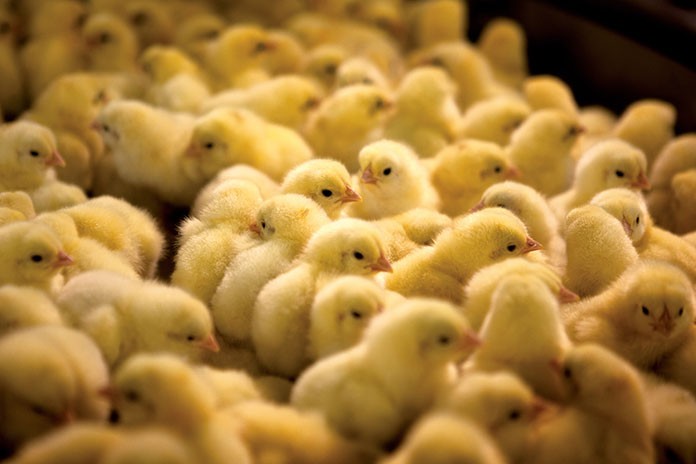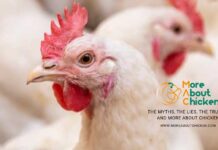
In the absence of beak treatment management strategies, which ensure appropriate bird development and growth and the provision of adequate environment and stimuli, which promote natural foraging behaviours are key.
Part 1 of the article discussed the importance of good stockman ship and ensuring the development and maintenance of good feather cover.
Part 2 looks at environmental enrichment and other general best management practices, which can easily and practically be implemented into the management for non-beak treated birds.
Environmental enrichment
Management strategies which promote scratching and natural foraging behaviour such as the addition of environmental enrichment are helpful in flocks with no beak treatment. Bales of alfalfa hay, straw or pecking blocks will promote the natural behaviours of scratching and foraging. Any environmental enrichment should be provided early on, no later than 14 days of age. It is beneficial to continue enrichment for 3-4 weeks after transfer, or in day old to death facilities, once the laying set-up has been finalised.
General management points
Adhering to recommended best practices for management, environment and nutrition will ensure birds will have their behavioural and nutritional requirements met so that development targets are achieved and a high level of welfare is maintained.
But there are a few specific key points in flocks with no beak treatment, where avoidance of feather pecking is particularly important, that should be noted.
- Light – as a general principle warm light is preferred to hard white light. Light intensity should not be too high for age (Table 1) and must be uniformly distributed throughout the house. Dimmable lighting offers the best control of light intensity in a uniform way.
- Metal track feeders can be advantageous as they have a natural blunting effect on the beak as the birds eat. Floor feeding has a similar blunting effect on the beak (as the birds peck against the concrete when feeding) provided litter depths do not exceed 2 cm (or 0.8 in). Floor feeding also promotes natural foraging behaviour and increases feeding time. In recent years the manufacturers of pan feeders have been looking at ways of developing an abrasive metal base which has a similar blunting effect on the beak to that of metal track feeders and pans with an abrasive interior base are now also available on the market.
- A consistent draft-free environment providing the correct temperature and adequate fresh air will encourage positive natural behaviours and good welfare.
- In rear and move facilities, transfer must be completed as smoothly as possibly to reduce the challenges the birds face at this time. Environmental and equipment differences must be minimised between rear and lay. Birds must have easy access to feed and water immediately upon arrival to the laying facilities and ideally light intensity in the laying house should be maintained at the same level as that in the rear house for a couple of days after transfer. After transfer, monitoring of crop fill and feeding behaviour to ensure that birds have found feed and water should be completed.
- Increasing eating up times can be beneficial when considering ways to minimise feather pecking. Longer eating up times can be achieved by feeding a coarse mash or by feeding higher fibre diets, especially in rear. Diluting diets with fibre allows larger daily feed amounts to be given. If included in the feed in a coarse particle size, fibre-rich raw materials (like oats, oat hulls, sunflower meal) will provide sufficient structure to stimulate gizzard development and the function of the whole gastrointestinal tract. By increasing the fill of the gastrointestinal tract low-density, high-fibre diets will also promote satiety. It is important to note that if diluting diets with fibre, dietary energy will be reduced and nutrient levels must be adjusted to ensure that the energy to nutrient ratios in the diet remain consistent.
Conclusions
Future broiler breeder management to maximise welfare and optimise production is achieved through the adoption of already established best practice management practices. Nowhere is this highlighted more than when considering the recent move towards stopping beak treatment. Ensuring recommended environmental, nutritional and management procedures are followed will ensure optimal welfare and encourage natural positive behaviours while allowing developmental and production targets to be met.

















